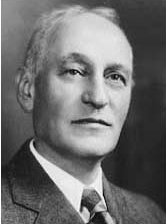Read an excerpt from this article below. You can download the full article by using the link at the end of the excerpt.
It’s easy to sit back and wait for problems to arrive at the planning commission. All of a commissioner’s time can be spent stamping out brushfires and processing standard reviews. But it is worth recalling that citizen planning commissioners were put in that position not to execute administrative chores for city council, but to provide insights into the problems and potential of the community, and to provide leadership in the solution of problems before they arise. Consider the history of the Cincinnati Planning Commission:
On January 4, 1914, a group of civic-minded individuals and representatives of the community development committees of a number of Cincinnati organizations founded the “United City Planning Committee.” They banded together to exert pressure on a local “boss” system of government nationally known for its inefficiency and corruption.
Through the medium of community planning, these Cincinnatians were seeking a more rational, publicly open, and less expensive system for the provision of needed capital facilities than the system of secret agreements, payoffs, and bribes that determined public development policy in Cincinnati at the time.

The United City Planning Committee, under the leadership of attorney Alfred Bettman, became the nucleus of dedicated citizen planners from which the Cincinnati City Planning Commission evolved. It ran an educational campaign, raised funds (over $100,000) to pay for preparation of a long-range community plan, and actively promoted the concept of a rational and open-to-public-scrutiny process of determining future expenditures for public works. …
End of excerpt
You must be logged in or a PlannersWeb member to download this PDF.